We understand that cattle feeding is a time-consuming process that requires attention to detail, consistency, and, of course, hard work. If you have any questions about bunk feed management or about cattle bunk feeders, then you’ve come to the right place. This article will give a general overview on bunk feeders for cattle including common questions, a helpful guide on how to make practical bunk feeders, and much more (or read about the best way to feed hay to cattle)! We’ll start with a simple question.
What Is A Feed Bunk?
Simply put, a cattle bunk feeder is a lengthy trough that is often made from metal or concrete. Its design can look like an upside-down semicircular trough with metal bars, or can also simply be a flat surface that is built with a concrete back to reduce feed waste.
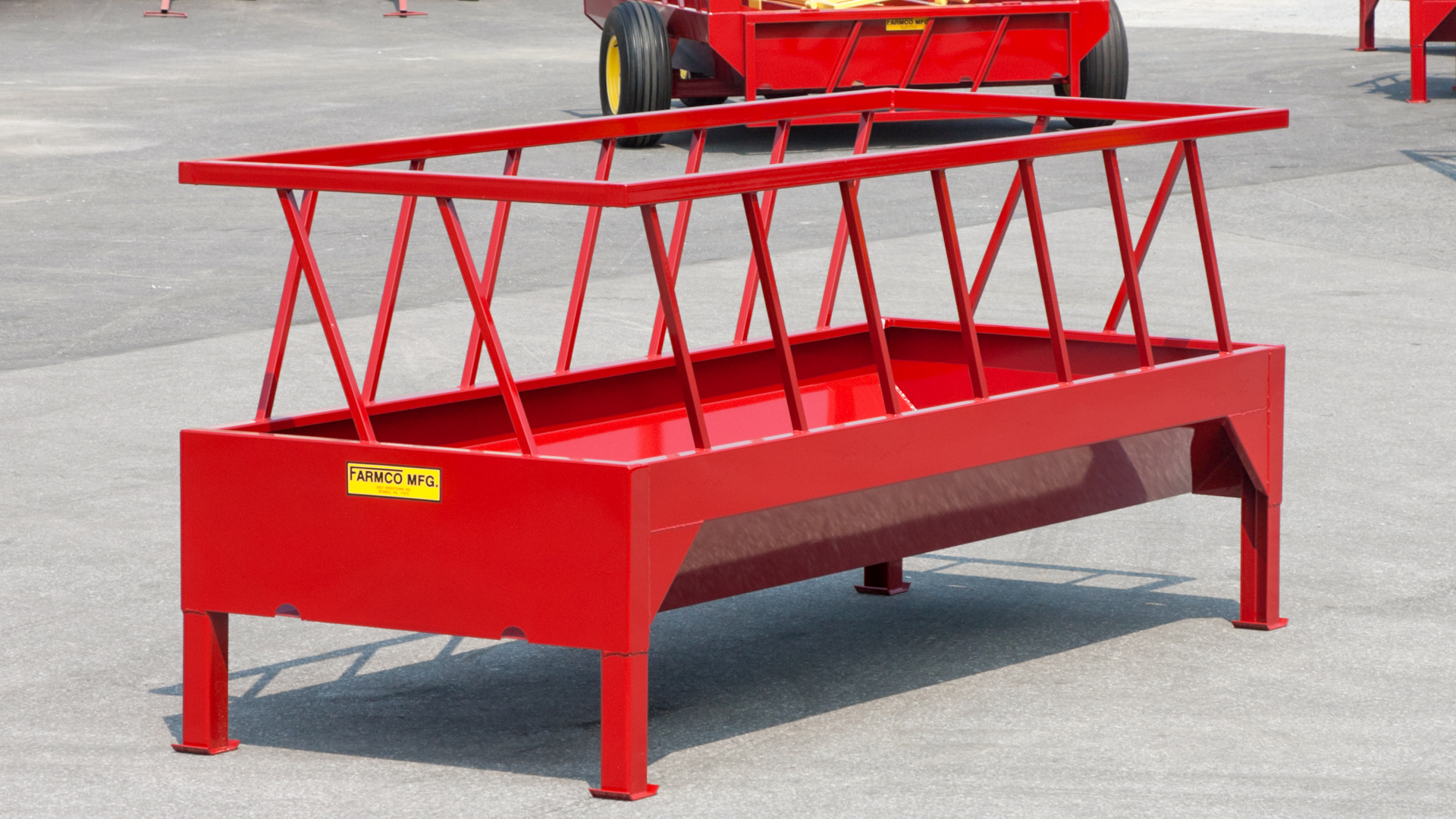
How Much Is A Feed Bunk?
Although bunk feeders can vary in price due to different companies, time of year, steel or concrete prices, etc., here are a couple of price ranges for some feed bunk products for cattle that we sell at Farmco Manufacturing. These prices should give you a ballpark idea of how much you’ll pay for a good bunk feeder.
L Series Bunk Feeder
The L Series Bunk Feeder is designed to meet the feeding needs of farms of all sizes, from hobby farmers to large operations.
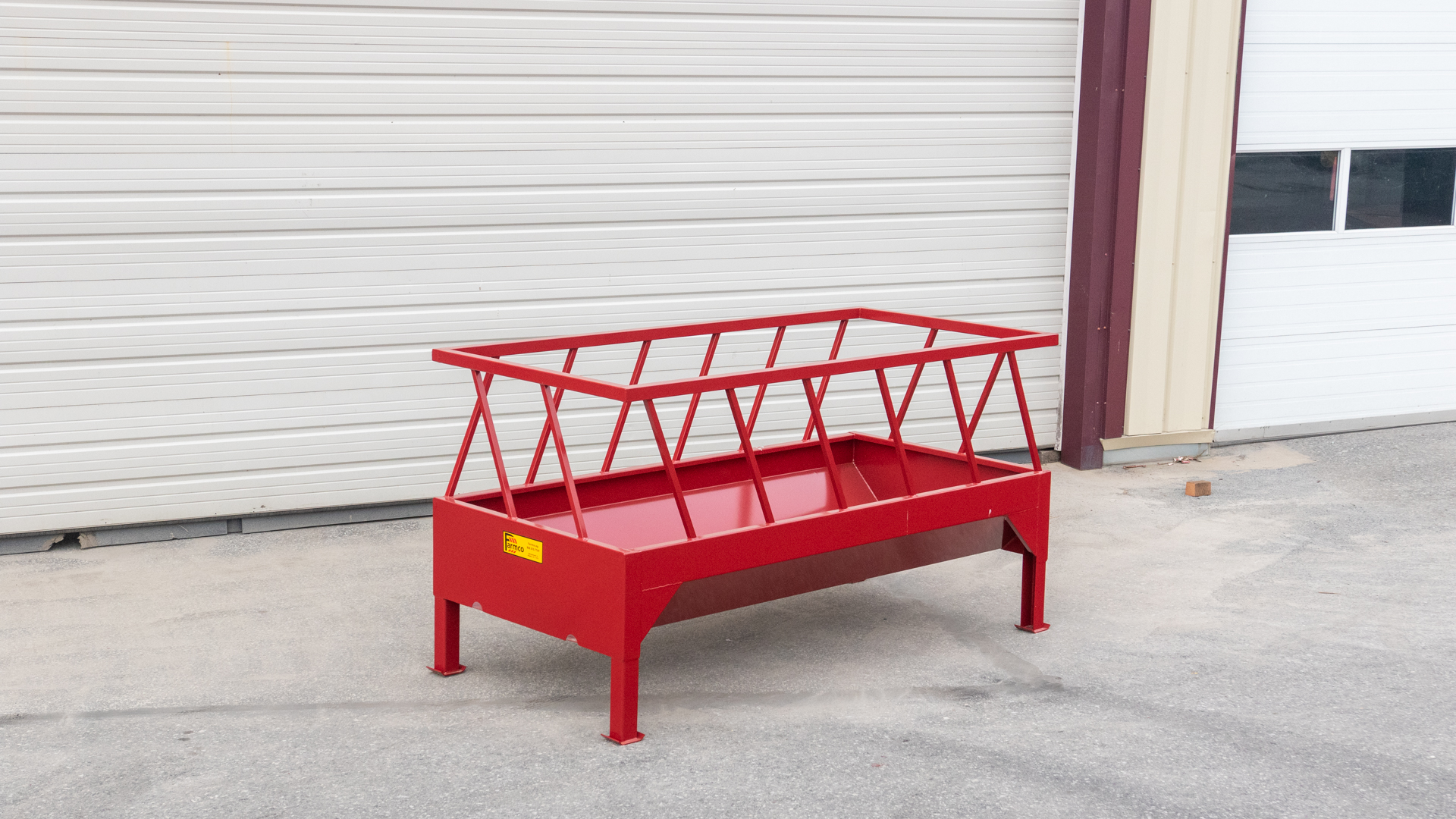
The trough on our bunk feeder is 4’ wide and 16” deep, allowing for plenty of space to pour nutritious feed for your cattle. It features sloped sides to keep feed consolidated down to the last scraps, as well as drain holes to avoid excess moisture accumulation. With sizes up to 24’ long, we have feed bunks that will handle as many as 40 head of cattle at a time.
An L-Series feed bunk is definitely a more heavy investment than the next two options. However, these feeders are designed to hold a lot of nutritious feed for a lot of cattle. Our article “No Waste Hay Feeders for Cattle” details the value of cattle feeders a bit more.
Calf Bunk Feeders
If you’re looking for a feed bunk that can be height-adjusted for the calves on your farm, our Calf Bunk Feeder is a great option. When feeding calves, often the problem with some feeders is that they’re too high for young cattle. Farmco’s calf metal bunk feeder solves this problem by adding adjustable legs that allow the height of the feeder to change along with the height of the herd. The legs of these metal feed bunks allow for the height to be changed from 16”-22”.
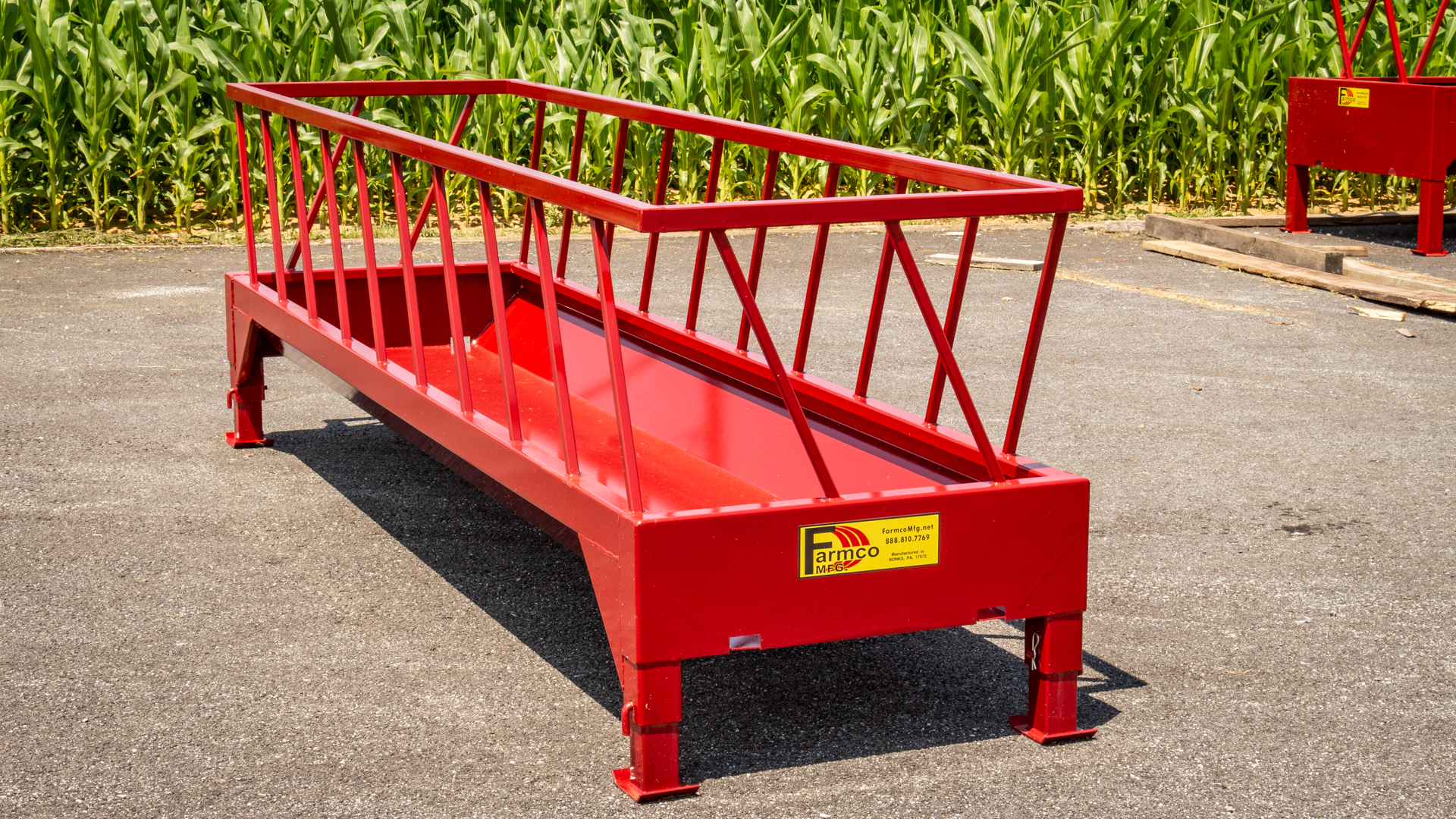
The trough on a Farmco calf hay feeder is 32″ wide, allowing for plenty of space to pour nutritious feed for your cattle. It also uses sloped sides to make cleaning easy, as well as four drain holes to keep water from accumulating in the feeder. With sizes up to 16’ long, Farmco’s calf bunk feeders can feed up to 30 calves at a time.
Calf feed bunks prices stand a happy medium. They’re generally less expensive than the L Series bunk feeders but more expensive than our final option below.
Grain/Small Square Bale Feeder
What if there was a feeder that could do two things equally well? With the 32 series feeder, there is. Although this is technically a horse feeder, we thought we should add this feeder to the list since it’s an extremely efficient and affordable feeder. We doubled up and combined a small square bale feeder with a bunk-style grain feeder. The result is a square bale feeder that allows you to feed hay, grain, or both simultaneously. It’s called multitasking.
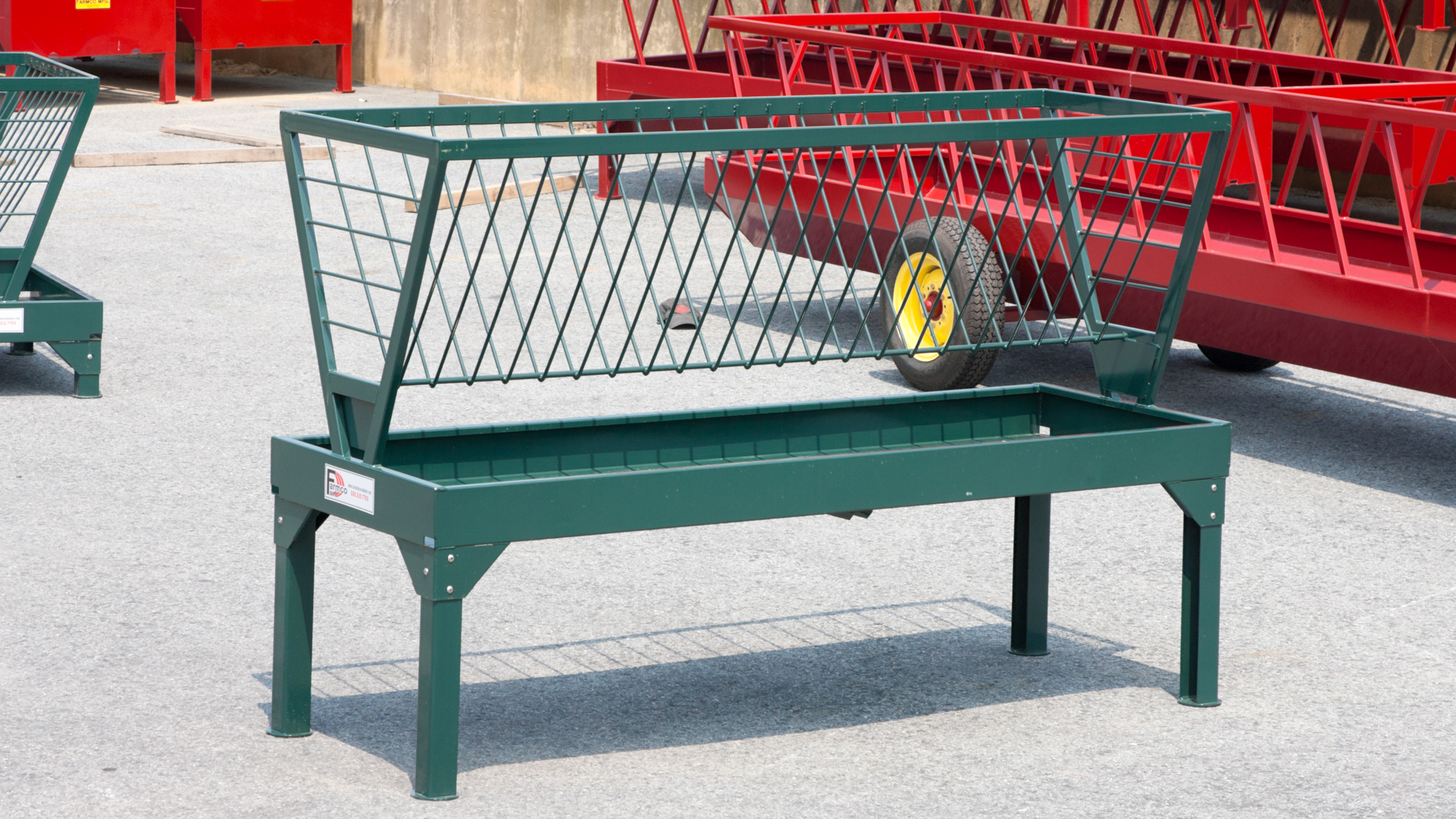
For the square bale feeder rack, we used 3/8” steel rods attached to a frame of 1/8” steel rectangle tubing. This hay rack is designed to be filled – time after time after time. The grain trough beneath the square bale feeder is 32” wide, built from 12-gauge steel, and stands 25″ from the ground.
One benefit of combining a metal bunk feeder with a hay rack is that it can help to cut down on hay waste. Much of the loose hay that is pulled from the square bale feeder is caught in the grain trough. Making sure your animals clean up feed scraps means healthier animals with a smaller feed bill, and that’s a win for everyone (also see our 1.5 ton portable grain bins for efficient grain storage).
The Grain/Small Square Bale Feeder costs the cheapest out of these three options.
To wrap up, here’s a list of the general cost differences between the L Series Bunk Feeder, Calf Bunk Feeder, and Grain/Small Square Bale Feeder.
| Feed Bunks | Cost |
| L Series Bunk Feeder | $$$ |
| Calf Bunk Feeder | $$ |
| Grain/Small Square Bale Feeder | $ |
Feed Bunk Management
Of course, some of the decisions based on feed bunk management are subjective from farmer to farmer. Obviously, it’s important to make educated bunk-feeding decisions based on the observations of your cattle’s food habits and your personal farming experience.
As the University of Nebraska Lincoln once said, “Proper bunk management is the art of matching feed deliveries to the number of feed cattle need for optimal performance.”
Typically, a good goal for cattle feed bunk management is to have two “1/2” days a week or three to four “1/2” days in 10 days. If your cows are showing you a “slick bunk,” or a cleaned-out bunk, every morning, that’s an obvious sign that more feed is needed in the feed bunk every day.
Another important tip is to stay consistent in pretty much every aspect of the feed bunk management process. One method of consistency to keep in mind is feed-time scheduling: try to keep the feeding times as consistent as possible from day to day. Of course, the feed times do not have to be at the exact time every day (the feed time can be up to 15 minutes off regular feeding time), but consistency is what you should be striving for.
Another way to draw conclusions about your bunk feed management is by the aggressivity of your cattle during feeding times.
Make changes slowly. If you want to change up the amount of food given to your cows, for example, space out your changes by 3-5 days.
It’s important to keep in mind that the less change, the more effective feed times will be. The more change, the less rumen fermentation occurs within your cattle, which is basically the process of your cattle changing food to energy. Also, remember that mistakes don’t appear quickly (2-3 days), so remain alert and observant to any mistakes that you may have caused.
How Do You Make A Bunk Feeder?
It turns out that making a simple bunk feeder is not very difficult. A couple of different ways that you could go about this are to link bins that are cut in half to each other, build a simple wood-framed bunk feeder, or cut bins in two and attach them to a wood frame for stability.
How Many Cows Should There Be Per Bunk Feeder?
This will vary according to the length of the bunk feeder.
How Many Inches Of Bunk Does A Cow Need?
Although this can vary, a cow needs anywhere from roughly 15”-30” of bunk room, which comes out to about 19” on average of feed bunk space per cow.
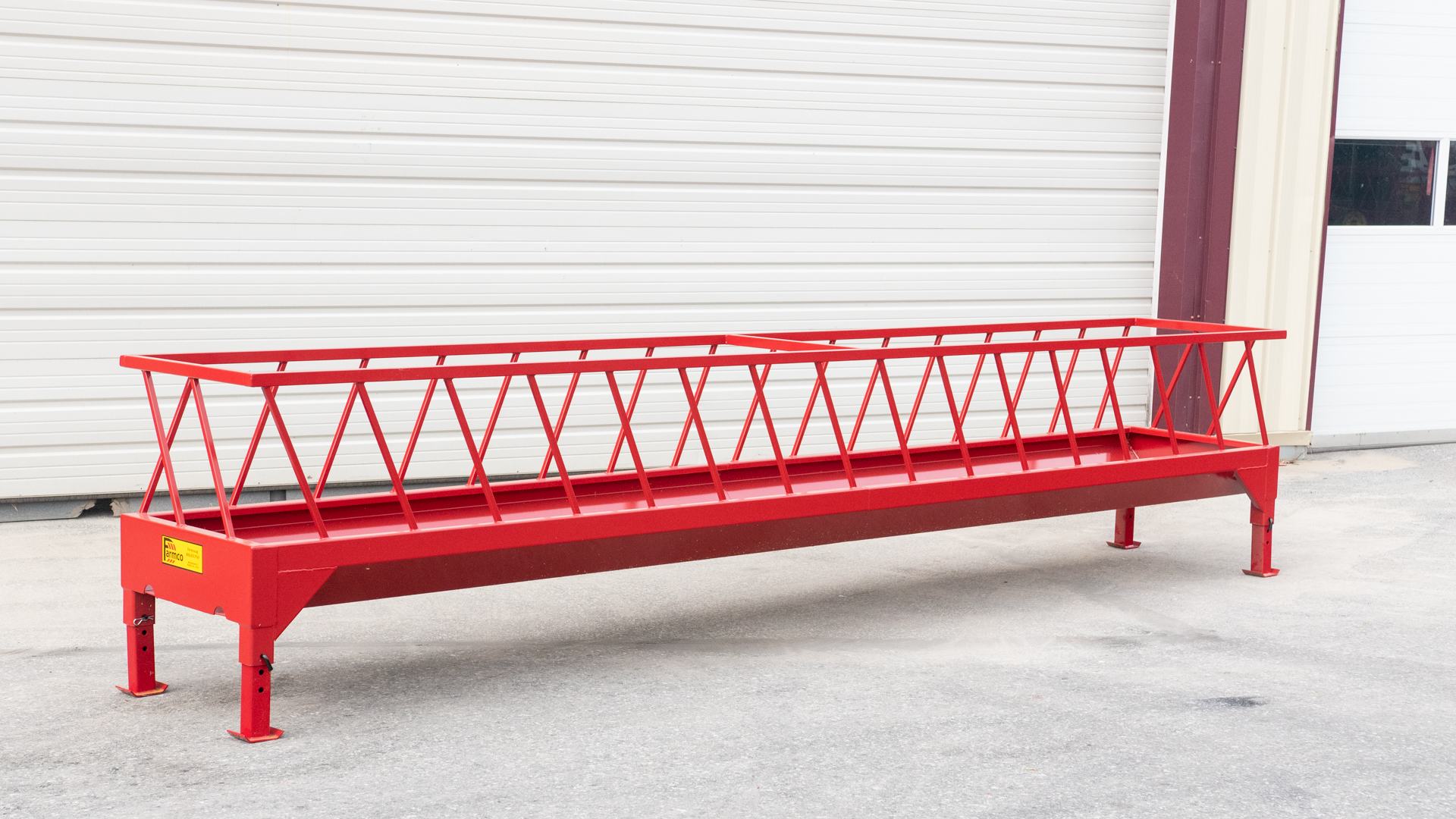
In Conclusion
Bunk feeders can be a very valuable and efficient investment for you and your livestock farm (also learn about our small grain bin sizes). From the definition of a feed bunk to how to build one, we hope that this article was a helpful resource on what to know about feed bunks. If you’re looking to possibly purchase some sort of cattle feeder in the future, check out our quality cattle feeders, including our metal bunk feeders.





